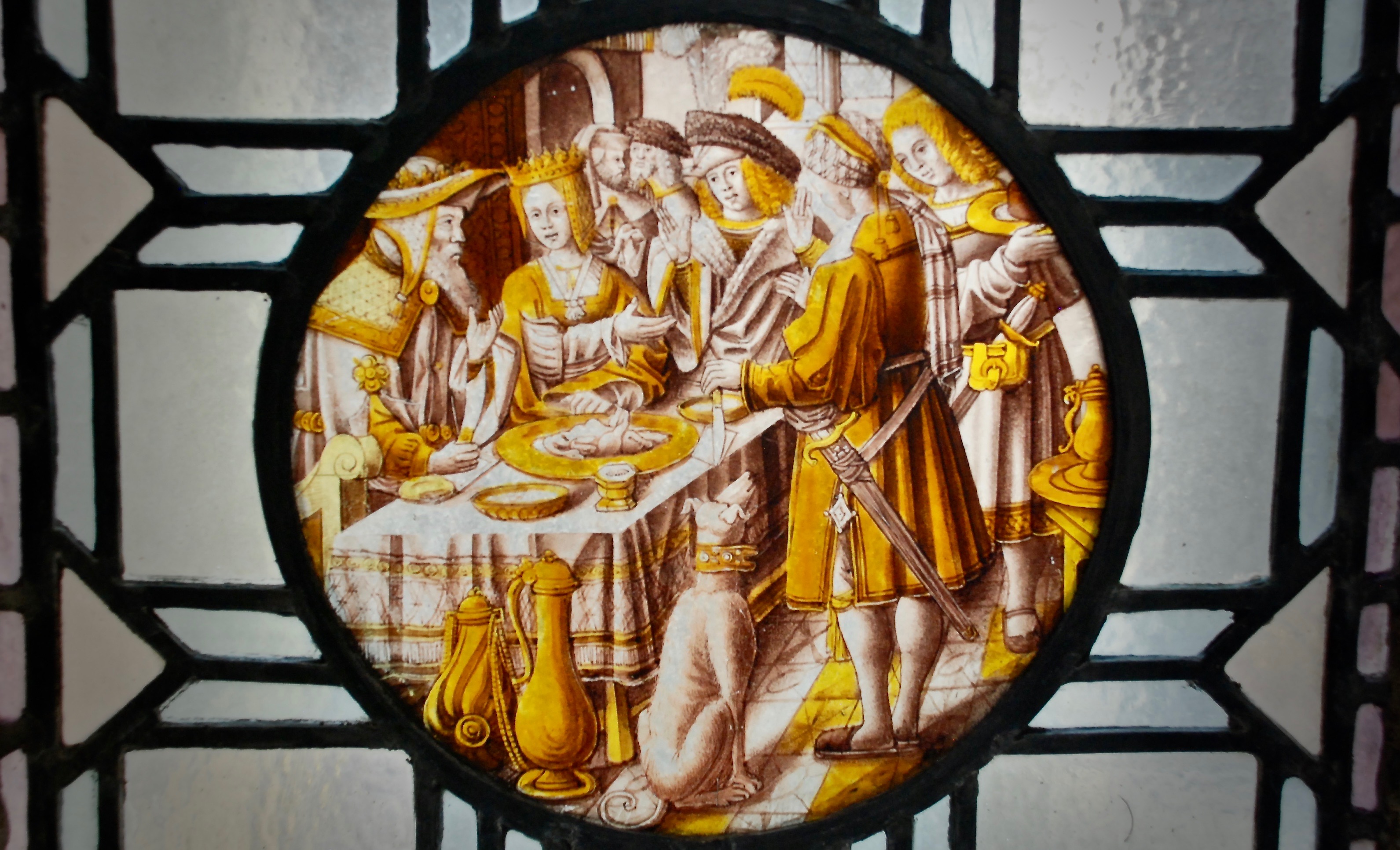The Feast of Ludgera
Celebrated at the beginning of Autumn each year in the Barony of Hohensten, the Feast of Ludgera celebrates the peace and prosperity that was brought to the Tafelland Valley by the now long dead, semi-divine Storm Giant, Ludgera, whose actions are remembered and recorded in the myth of The Duel of Ludgera & Arnwulf. The time of year that the Feast takes place, along with the association of the occasion with the arrival of plenty and peace has allowed the it to morph over the years into a harvest festival rather than a specific celebration of the events outlined in the mythos.
History
It is unclear exactly when the Feast of Ludgera began to be celebrated consistently, but it is thought to date back into the Nomadic Era, perhaps even to the lifetime of Ludgera herself. As the myth surrounding the defeat of the Black Dragon Arnwulf at the hands of Ludgera at Broken Peak Mount has been known to the nomadic people of the area long before permanent settlements were established in the Tafelland Valley, it is possible that a version of the feast has been celebrated for thousands of years. However, once permanent communities began to exist in the region of the Barony of Hohensten, and these people had to contend with the difficult business of farming at altitude in a cold climate, a regular feast to give thanksgiving for the harvest, and protection that Ludgera has afforded the people and their crops quickly sprang up. As time has passed the focus of the feast has shifted more towards thanksgiving for a good harvest, rather than a dwelling on the specific protection that Ludgera is widely believed to grant to people of Hohensten, but the yearly offerings to Ludgera still show that she is an important part of the feast, rather than just lending her name to it.
Execution
As the name suggests, the central focus of the Feast of Ludgera is a large shared meal. This can be conducted in extended family units, or even as a whole community coming together to eat and drink communally. A large communal meal is quite popular within the villages of Hohensten, where the population is much smaller and it is logistically much easier, whereas in the Baronial seat of Kleinhaupt, it is far more common for families to come together to share a meal, rather than the whole community. The central feast is generally a very elaborate affair, which in agricultural communities is used as a way of using up excess produce that will either not survive through the winter, or that they do not have the space or time to preserve.
In addition, families across the Barony will leave offerings at the shrines of Ludgera, which exist in almost all communities within Hohensten. In Kleinhaupt, offerings will be taken to the Temple of Ludgera which sits at the foot of the Baronial Mansion complex in the centre of the town. These offerings will mostly consist of food or drink, but it has also become increasing common for people to craft, or buy humanoid effigies made of straw, which are left at the temple or at shrines of Ludgera to represent loved ones in need of protection.
In general the order of the day is quite heavily dictated by tradition, with people rising early to go and make offerings in the morning, followed by the communal preparation and eating of the central feast at midday. The feast itself will often last for many hours, and is generally followed by dancing and music accompanied by drinking long into the night.
Participants
The festival takes place in the villages and towns across the Barony of Hohensten, but is pretty much unknown outside of the Barony. The neighbouring nations, the Dukedom of Eisenbrook and the Earldom of Fürstenkreis are aware that the feast takes place, but they do not celebrate it themselves. Within the Barony of Hohensten the vast majority of its inhabitants celebrate the festival, regardless of their social standing or income. For many the feast is often regarded as an occasion where local communities can come together to share in the bounty of the harvest.
Observance
The feast is observed each year on the 15th day of the 10th month, traditionally a time in the Felsspitze Mountains when the harvest has been brought and the preserving of produce has begun ahead of the arrival of the bitterly cold winter months.
Primary Related Location




Comments